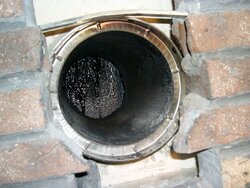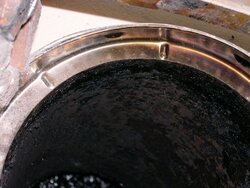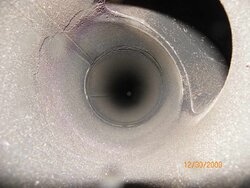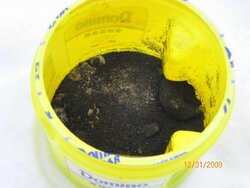Seems like this has been one step forward and two steps back the whole way with this. Started with a sweep telling me my chimney was unsafe to use (clearance to combustibles and wall penetration issues), me coming around to agreeing (and learning a lot from this site), to me locating a local dealer that is looking at options to correct the problems. At this point the local dealer is telling me that (based on my photos only, attached) the glazed creosote is a big safety concern and that it can not be cleaned. Even with installing a liner the heat could build up and cause that to ignite. So, they're looking at 'other options' for me to have a safe install.
Before hearing this last bit, I had been thinking I would call back the sweep that did the cleaning two months ago and have him re-clean the lower section of the flue (just prior to getting the flue re-lined). When I checked it from above after the cleaning, it looked fairly good to me - I think it's coated in the lower reaches near where the stove connected to the flue.
So, no option to get the existing flue cleaned? Just accept what the dealer tells me? Want to get this right, but want to avoid major expense if I can. And always good to have a reality check when getting proposals/quotes.
Thanks in advance,
John
Before hearing this last bit, I had been thinking I would call back the sweep that did the cleaning two months ago and have him re-clean the lower section of the flue (just prior to getting the flue re-lined). When I checked it from above after the cleaning, it looked fairly good to me - I think it's coated in the lower reaches near where the stove connected to the flue.
So, no option to get the existing flue cleaned? Just accept what the dealer tells me? Want to get this right, but want to avoid major expense if I can. And always good to have a reality check when getting proposals/quotes.
Thanks in advance,
John





